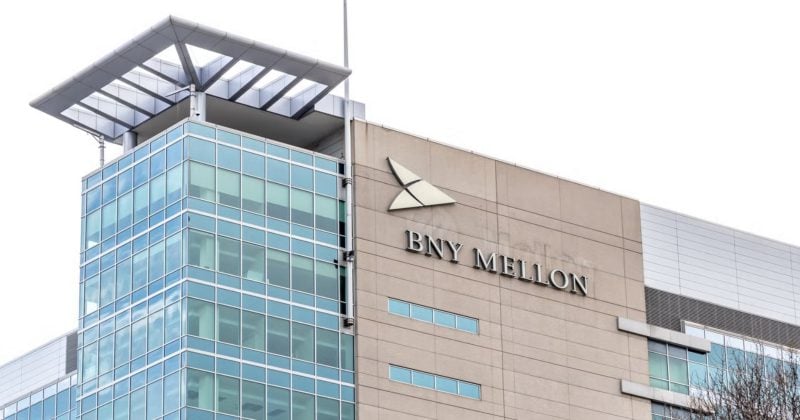In This Article
This article is presented by Connect Invest.
As cities rethink how to fill empty office towers, New York City is leading a transformation that’s redefining how investors approach real estate income. New York City just reached a turning point in its efforts to revive its post-pandemic office landscape. The conversion of JPMorgan’s former 25 Water Street headquarters—now a 1,320-unit residential tower with gyms, co-working lounges, and recording studios—marks the largest office-to-residential redevelopment in U.S. history. At the same time, SL Green’s $730 million acquisition of a fully leased Midtown tower suggests investors are betting that New York’s urban core is far from finished.
Together, these moves tell a story: Institutional capital is reentering office real estate, but through new channels, shorter debt horizons, and adaptive reuse. That creates an opportunity for private-credit investors looking for yield.
That’s the same shift Connect Invest has been tracking in private credit. As institutions pivot to shorter lending windows and asset-backed security, individual investors are following suit, seeking fixed-income opportunities backed by real property.
However, behind each conversion lie layers of complexity. According to Business Insider, conversions are “notoriously architecturally complex” and financially and legally tricky to execute. So while there are substantial ROIs for debt investors to get excited about in this area, there are also substantial complications to be aware of.
Zoning and Permitting
New York’s zoning amendments under the City of Yes for Housing Opportunity initiative are expanding eligibility for residential conversions in districts south of 60th Street. The Midtown South rezoning plan, as it’s also known, has been welcomed by developers, investors, and residents alike because it gets rid of outdated manufacturing zoning in Manhattan’s Garment District, traditionally home to commercial properties in the fashion industry. The manufacturing industry in the city has declined for decades, while the demand for residential units has consistently gone up.
Howard Raber, director of investment sales at Ariel Property Advisors, told Forbes that owners and developers are tremendously optimistic about the Midtown South rezoning plan because it will allow both office-to-residential conversions and ground-up residential developments.
Financing for office-to-residential conversions will be made easier by the 467-m tax abatement introduced in the New York State 2025 budget. This abatement allows for savings up to 90% for up to 35 years, depending on the project commencement date. The lucrative opportunity for investors is amplified by the fact that residential rents are always considerably higher than commercial.
Even with the inevitable per-square-foot losses that will come from complying with the Mandatory Inclusionary Housing zoning tool, which stipulates that a certain percentage of residential housing be made affordable to lower-income residents, investors can look forward to further relaxations in the zoning restrictions, notably the lifting of FAR (floor-to-area) density caps. New residential developments that comply with Mandatory Inclusionary Housing will be allowed to have a higher density, which will offset the losses from affordable units.
Moreover, assemblages are permitted under the new zoning laws. Assemblages combine old office spaces to create new residential ones, utilizing existing airspace to create even more housing.
Raber told Forbes that these developments have “significant potential,” “leveraging air rights to build much-needed housing and transform blocks with higher rental values compared to vacant or low-rent office spaces.”
The Manhattan South rezoning is not the only current zoning legislation opening up conversion opportunities in NYC. The Atlantic Avenue Mixed-Use Plan and the Bronx Metro-North rezoning also aim to ramp up the building of new housing in the city.
For debt investors, these zoning and structural hurdles highlight a critical advantage: predictable returns are far easier to achieve when you’re lending to projects rather than building them. Through Connect Invest, investors can participate in real-estate-backed notes, secured, short-term debt positions that deliver a consistent yield while leaving the permitting and construction risk to experienced developers.
Structural Work
Despite the welcome relaxation of zoning restrictions, office-to-residential conversions will still come with inherent structural challenges.
Specifically, office floors often have deeper floor plates and fewer windows; that means developers must carve out interior courtyards or vertical shafts for light and ventilation. Moreover, some office buildings have windows that are inoperable, whereas a residential property, to be desirable, will need functional windows that can be opened.
Depending on the building’s original design, the structural interventions required can be quite dramatic. The 25 Water Street conversion, for example, involved cutting two light wells into the center of the building and adding 10 floors to the top. As is typical of a commercial building of its size, the Water Street building had small, insufficient windows and would not comply with existing regulations for residential buildings as it was.
John Cetra, the Manhattan architect and co-founder of CetraRuddy, the practice that executed the conversion project, told Business Insider that they “created the hole in the doughnut to bring the light and air into the middle of the space.”
Light and ventilation are two obvious requirements that conversions must fulfil, but there are many other structural considerations that have legal implications. For example, conversion projects will have to comply with federal laws such as the Americans With Disabilities Act.
You might also like
Investors need to factor in necessary structural changes into their business plans. The nature of apartment conversions is quite different from the simple remodel that is often all that’s needed in an existing residential investment.
Mechanical and Plumbing
Finally, once the structural work is done, apartment conversions typically undergo extensive mechanical and plumbing overhauls. Entire water, HVAC, and electrical systems in these buildings have to be reengineered for the multifamily code.
A commercial building’s HVAC system is substantially different from that of a residential one; the two comply with very different sets of rules and regulations, or HVAC zoning laws.
An office building is designed to provide ventilation and air conditioning five days a week, with typically a single thermostat serving an area as large as 2,000 square feet.
A multifamily residential building, on the other hand, requires a thermostat per residential unit, and a fully functioning HVAC system that will provide ventilation and heating/AC 24/7. In many cases, office spaces come with outdated HVAC systems unsuitable for residential use that have to be replaced completely.
Details like metering (each unit will need its own utility meters) and the number and positioning of electrical outlets will also need to be carefully considered and planned for. The same goes for plumbing: It is not simply that a residential building needs more plumbing fixtures than a commercial one. This has implications for the size of incoming water service and outgoing waste services. The capacity will need to be increased for both.
Final Thoughts
None of these issues is insurmountable, but they are considerably more complex than a like-for-like residential conversion.
For most investors, dealing with and coordinating all the different aspects of an apartment conversion is simply too much work, especially if juggling multiple investments. The takeaway? Complex projects like these will always require deep capital, long timelines, and expert teams. But for investors who want exposure to the same asset class without the sleepless nights, debt-based investing offers a direct path.
Connect Invest bridges that gap, letting everyday investors earn fixed monthly returns backed by real estate, while the developers handle the heavy lifting.
Instead of betting on permits and construction deadlines, you can earn a predictable income from the same ecosystem that drives billion-dollar projects like Water Street.
Learn more about Connect Notes at Connect Invest.


























